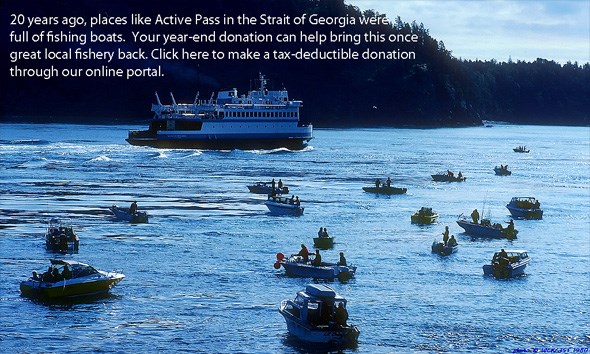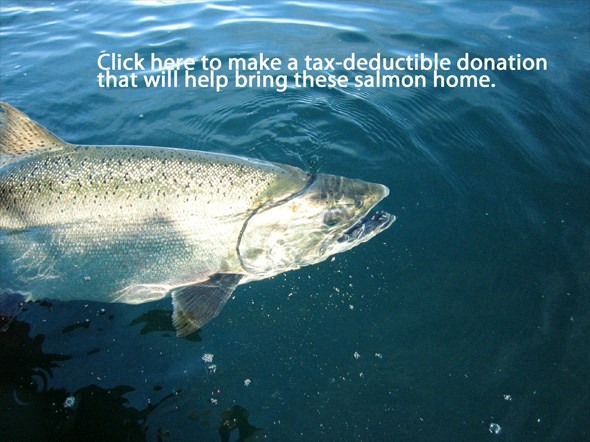
Fishing in our own backyard
Do you remember when 'going fishin' meant just a hop, skip and a jump from your backdoor and home in time for dinner? I have great memories of fishing in the Strait of Georgia during the 1980’s and early 1990’s. I was just a young kid back then, but I vividly recall many days mooching in Active Pass, hooking up with a nice Chinook, and battling the fish through a maze of fishing boats - often with a BC ferry bearing down on us, horn sounding.
A $750 million fishery vanishes
But mysteriously from, 1993-1995 something happened. The fish stopped showing up in Active Pass and in the rest of the Strait of Georgia. And it was not a gradual decline. Over the course of just three years the entire Strait of Georgia fishery for Chinook and wild Coho collapsed to around 10 per cent of what it was. Here are a few telling figures:
During the 1970s and 80s:
- $750 million - annual value of the recreational fishing industry in the Strait all supporting local communities
- 1,000,000 - average number of wild coho retained each year
- 300,000 - 600,000 - average number of Chinook retained each year
And now:
- $100 million – high-end of estimated annual value of the recreational fishing industry in the Strait
- 0 (zero) - No wild coho may be retained in the Strait (hatchery coho may be retained)
- 25,000 - 50,000 - average number of Chinook retained each year
Causes for salmon declines in the Strait
So what caused this collapse and why hasn’t anything been done about it?
While there have been many useful studies and numerous theories about what caused the salmon decline, there has never been the leadership to design and coordinate a comprehensive look at the Strait as an ecosystem. That is, until now.
As of 2013, the Pacific Salmon Foundation is spearheading an unprecedented five-year study that will provide answers and seek to restore Chinook and wild Coho populations in the Strait to previous levels. I’ll provide details of this study in next week’s blog post so keep an eye open for that. In the meantime, if you would like to help contribute to the important work of the Foundation you can make a tax-deductible donation through our secure online portal by clicking HERE.
Or, text “salmon” to 45678 to give $10 to the Pacific Salmon Foundation and help us revive this once great local fishery.
This charge will show up on your next phone bill.
Until next week,
-Cory Matheson
Recreational Fisherman & Business Development Officer
Pacific Salmon Foundation



